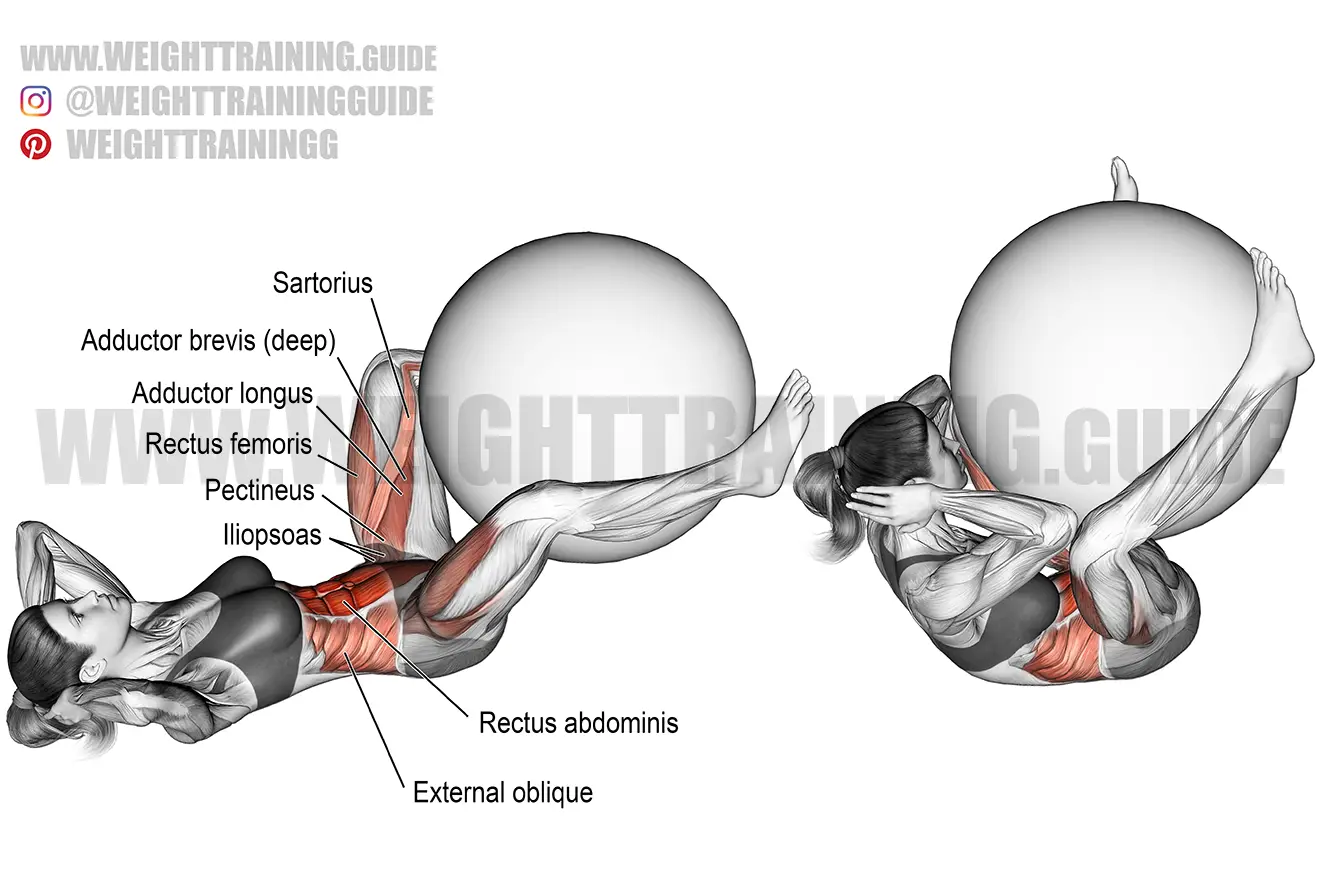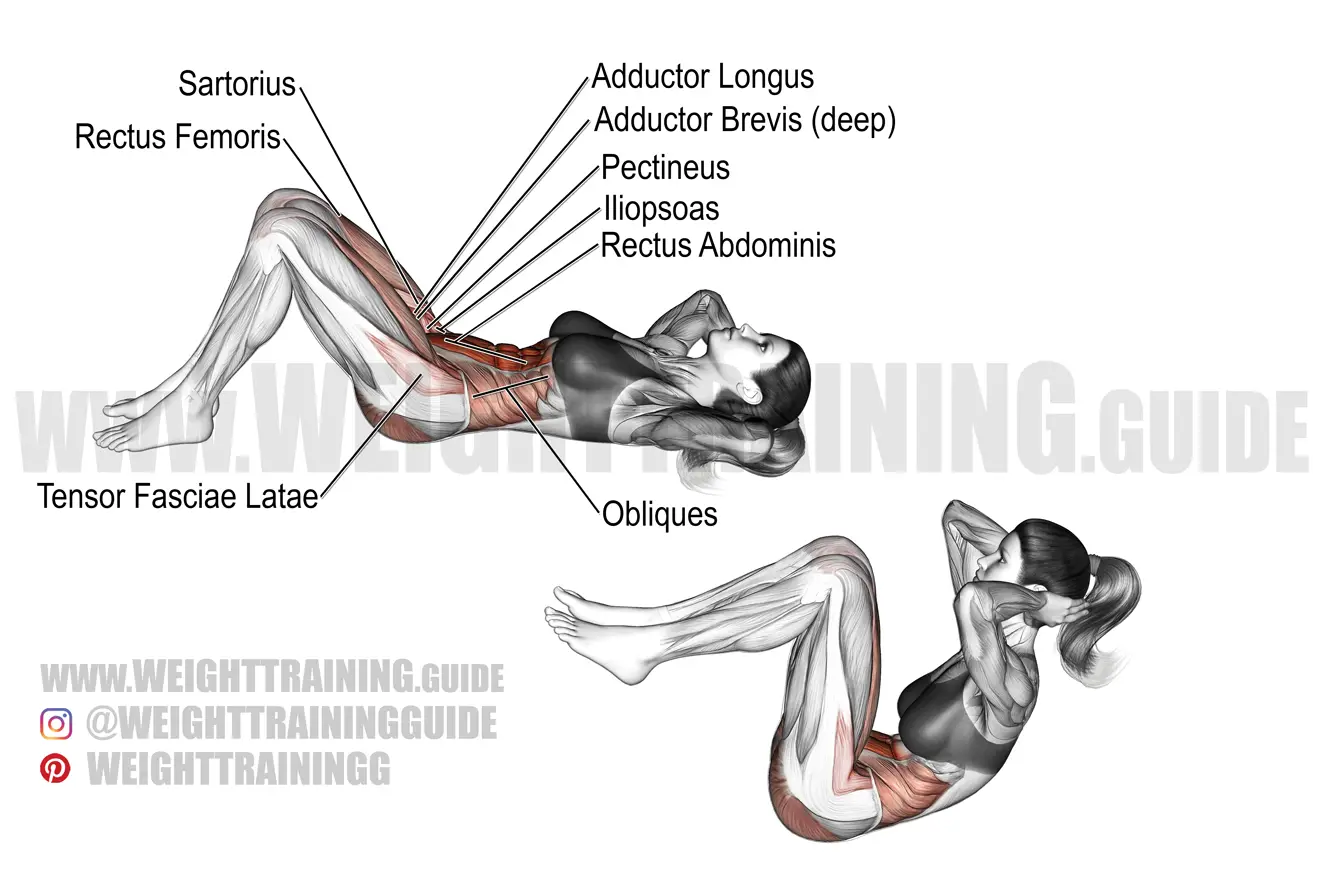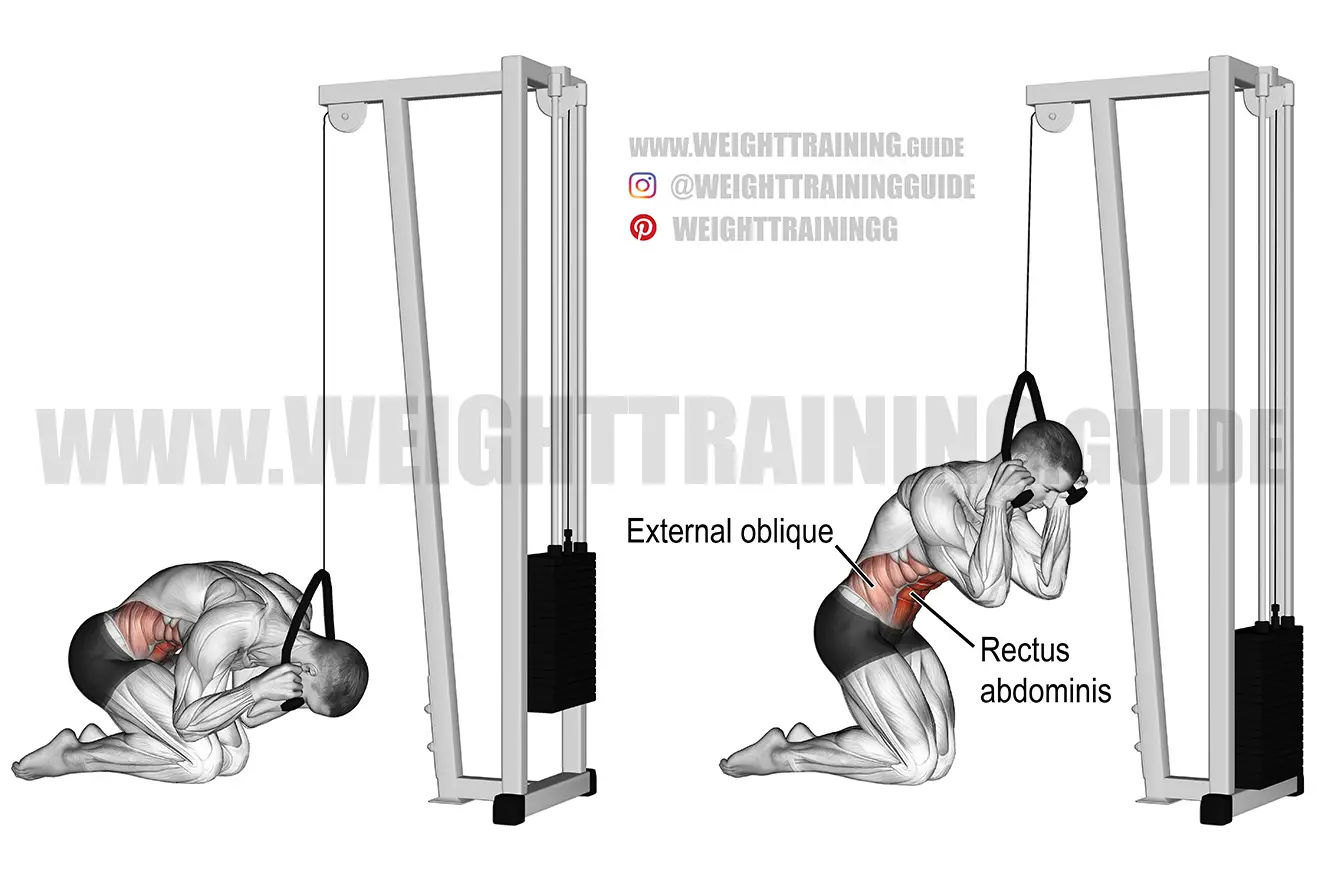The quest for a strong, defined core often leads us down a path of endless exercise variations, but two contenders consistently rise to the top of the discussion: the cable crunch and the leg raise. Both are formidable tools in sculpting your midsection and building functional strength, yet they target your abdominal muscles in distinct ways. Understanding these differences is key to optimizing your workout routine and achieving your fitness goals. This article will delve deep into the mechanics, benefits, and drawbacks of each exercise, drawing on expert insights and user data to help you decide which one, or perhaps both, deserves a place in your regimen.
Whether you're aiming for a chiseled six-pack, improved posture, or enhanced athletic performance, a strong core is non-negotiable. But with so many exercises vying for your attention, it can be challenging to discern which ones offer the most bang for your buck. Join us as we break down the ultimate showdown between the cable crunch and the leg raise, providing you with the knowledge to make informed choices for your core training.
Table of Contents
- Understanding the Core: More Than Just a Six-Pack
- The Cable Crunch: A Deep Dive into Abdominal Contraction
- The Leg Raise: Elevating Your Core Strength
- Cable Crunch vs Leg Raise: The Showdown
- What the Data Says: Planfit Users' Preferences
- Expert Insights and Best Practices
- Integrating Both into Your Routine
Understanding the Core: More Than Just a Six-Pack
Before we pit the cable crunch against the leg raise, it's essential to understand what we mean by "core." Your core isn't just your rectus abdominis (the "six-pack" muscle); it's a complex network of muscles, including your obliques, transverse abdominis, and lower back muscles, all working together to stabilize your spine and pelvis. A strong core is fundamental for almost every movement you make, from standing up straight to lifting heavy objects. While many aspire to visible abs, remember the timeless adage: "Six packs are made in the kitchen." Nutrition plays a pivotal role in revealing those muscles, but targeted exercises like the cable crunch and leg raise are crucial for building their strength and endurance.
The Cable Crunch: A Deep Dive into Abdominal Contraction
The cable crunch is a popular isolation exercise that specifically targets the rectus abdominis, promoting a strong, visible "six-pack." It allows for progressive overload, meaning you can continuously increase the resistance as your strength improves, making it an excellent choice for muscle hypertrophy.
What is a Cable Crunch?
The cable crunch is typically performed kneeling, allowing for a focused contraction of the abdominal muscles. To set up, "Start by kneeling on the floor with a cable machine behind you. Grab the cable with both hands and place it behind your head, keeping your elbows bent." From this position, you initiate the movement by contracting your abs, bringing your elbows towards your knees. The motion is simple: "Exhale and crunch forward, bringing your elbows to your knees. Inhale and extend back to the starting position. Repeat for the desired number of repetitions." The key is to minimize hip flexor involvement and truly feel the abdominal squeeze.
Benefits of the Cable Crunch
- Direct Abdominal Activation: The cable crunch provides a direct and intense contraction of the rectus abdominis, making it highly effective for targeting the "six-pack" muscles.
- Progressive Overload: Unlike bodyweight crunches, the cable machine allows you to easily increase the weight, providing a clear path for progressive overload. This is vital for continued muscle growth and strength gains. Anecdotally, some individuals can progress to significant weights, with one user noting they were "Close to maxing the cable crunch (100 lb.)"
- Versatility: While the kneeling variation is common, the cable reverse crunch also exists, fitting "a specific role, not really offered by other options," by focusing more on the lower abdominal region. This versatility allows for different angles of attack on the core.
- Mind-Muscle Connection: The controlled nature of the movement, especially when focusing on technique and breathing, can help build a strong mind-muscle connection with your abs.
Potential Drawbacks & Considerations
While effective, the cable crunch isn't without its criticisms. "Crunches were once the gold standard of ab work, but their reputation among fitness experts has declined somewhat over the years. In fact, in a 2001 report by the American Council on..." (likely referring to concerns about spinal flexion). Excessive or improper spinal flexion, especially under heavy load, can potentially put strain on the lower back over time. Therefore, maintaining proper form and avoiding ego lifting are paramount.
Another practical consideration is accessibility and consistency. As one user pointed out, "Cable crunches seem kinda difficult to do in a consistent way (plus most cable machines don't go up to a high enough weight)." While this might be true for some gym setups or very strong individuals, most standard cable machines offer sufficient resistance for the majority of users. The challenge lies in ensuring the machine is available and set up correctly for consistent use.
The Leg Raise: Elevating Your Core Strength
The leg raise, in its various forms, is a dynamic exercise that primarily targets the lower abdominal muscles and hip flexors. It's often praised for its functional benefits, as it involves movements that translate more directly to real-world activities.
What is a Leg Raise?
The term "leg raise" encompasses several variations, including hanging leg raises, captain's chair leg raises, and even decline leg raises. "Hanging knee raises and crunches are both core exercises used to target and strengthen the abdominal muscles. But, that's about where the similarities end." The core principle involves lifting your legs (or knees) towards your torso, engaging the lower abs and hip flexors. "The cable hanging leg raise is a dynamic exercise that effectively targets the abdominal muscles while also engaging the hip flexors. By utilizing a cable machine, this movement" adds resistance, similar to how the cable crunch adds resistance to the upper abs.
For those new to the movement, learning "How to perform hanging leg raises" is crucial for safety and effectiveness. Variations like "The Garhammer raise is similar to the captain’s chair leg raise or hanging leg raise but easier to execute. You can load this variation by holding onto additional load by your feet," offer scalable options for different strength levels.
Benefits of the Leg Raise
- Lower Abdominal Focus: Leg raises are excellent for targeting the often-neglected lower abdominal region, contributing to a more balanced and complete core development.
- Functional Strength: "Crunches don’t translate to standing function, but leg lifts do." This highlights a significant advantage of leg raises: they build strength that directly applies to everyday movements like lifting your legs, climbing stairs, or even running.
- Hip Flexor Engagement: While sometimes seen as a drawback, the engagement of hip flexors can be beneficial for athletes and individuals needing stronger hip flexion for their sport or daily activities. However, it's important to differentiate between hip flexor work and true abdominal contraction. For those looking to emphasize abs over hip flexors, a user highly recommends a variation "that hits the abs more than hip flexors and the stretch is insane," suggesting to "Do leg raises/reverse crunches on a decline."
- Variety of Progressions: From bent-knee raises to straight leg raises, and adding ankle weights or using a cable machine, there are numerous ways to progress the leg raise exercise.
Potential Drawbacks & Considerations
The primary concern with leg raises, particularly hanging or captain's chair variations, is the potential for hip flexor dominance. If not performed with proper technique and a conscious effort to engage the abs, the hip flexors can take over, reducing the effectiveness of the exercise for core development. This is where variations like decline leg raises or focusing on a "reverse crunch" motion can be beneficial, as they help shift the emphasis to the abs.
Another consideration is the accessibility of equipment. Hanging leg raises require a pull-up bar, and captain's chair leg raises require a dedicated piece of equipment. While bodyweight floor leg raises are an option, they may not offer the same range of motion or challenge as hanging variations.
Cable Crunch vs Leg Raise: The Showdown
When comparing the cable crunch vs leg raise, it's clear they are designed to achieve different, yet complementary, goals for your core. "Hanging knee raises and crunches are both core exercises used to target and strengthen the abdominal muscles. But, that's about where the similarities end."
- Muscle Activation: The cable crunch excels at isolating and contracting the upper rectus abdominis. The leg raise, on the other hand, targets the lower rectus abdominis and significantly engages the hip flexors. For comprehensive abdominal development, hitting both regions is crucial.
- Functional Strength: Leg raises generally offer more functional benefits, as the movement pattern of lifting the legs translates to real-world activities. Cable crunches, while building strength, are more about direct muscle contraction and less about multi-joint functional movement.
- Progressive Overload: Both exercises allow for progressive overload, but in different ways. Cable crunches allow for direct weight increases. Leg raises can be progressed by increasing the range of motion, slowing the tempo, or adding external resistance (like ankle weights or a cable attachment for cable hanging leg raises).
- Spinal Health: Concerns about spinal flexion exist for crunches, especially under heavy load. Leg raises, particularly hanging variations, can be more spine-friendly if performed correctly, as they involve spinal decompression. However, improper form in leg raises can also strain the lower back if the core isn't properly engaged.
Ultimately, "Still, there is a time and place for both." Neither exercise is inherently "superior"; their effectiveness depends on your specific goals, body mechanics, and ability to execute them with proper form.
What the Data Says: Planfit Users' Preferences
It's fascinating to see what the broader fitness community prefers. Planfit, a popular fitness tracking platform, offers some interesting insights based on a massive dataset. According to their analysis, "Based on randomly selected data from 1 million completed workouts, Planfit users" have shown preferences between these two core exercises.
When looking at "Planfit users' choice about cable crunch vs captains chair leg raise," the data indicates a certain leaning. Similarly, "Planfit users' choice about cable crunch vs hanging leg raise, Based on randomly selected data from 1 million completed workouts, Planfit users seem to" have a distinct preference. Consolidating this, "Planfit users' choice about leg raise vs cable crunch, Based on randomly selected data from 1 million completed workouts, Planfit users seem to prefer leg" raises over cable crunches. This preference might stem from the perceived functional benefits, the challenge of hanging variations, or simply personal enjoyment and accessibility in various gym environments.
While user preference doesn't necessarily dictate scientific superiority, it does highlight the popularity and perceived effectiveness of leg raises among a large user base. This data can serve as a guide, but individual results will always vary based on execution and personal response.
Expert Insights and Best Practices
Beyond the data, practical experience from fitness professionals offers invaluable guidance. One individual who "Worked with someone that has placed on multiple times on nationals, natural comp," shared a key takeaway: their coach "Said to do cable crunches and leg raises while focusing on technique (breathing)." This emphasizes that the quality of movement, and not just the quantity of weight or repetitions, is paramount for effective core training and injury prevention.
Proper breathing is integral to core engagement. Exhaling during the concentric (contracting) phase and inhaling during the eccentric (lengthening) phase helps to stabilize the spine and maximize muscle activation. For cable crunches, this means exhaling as you crunch down. For leg raises, it means exhaling as you lift your legs.
Another piece of advice from experienced lifters often includes variety. As one user stated, "I do cable crunches, hanging leg raises, and once in a while I'll use the ab wheel." This multi-faceted approach ensures that different parts of the core are challenged in various ways, leading to more comprehensive development and preventing plateaus. While the ab wheel might "hurt everywhere (wrists, elbows, shoulder, back)" for some, its inclusion highlights the importance of exploring different tools for core strength.
For those struggling with hip flexor dominance in leg raises, remember the recommendation to try "leg raises/reverse crunches on a decline" for an "insane" stretch and better ab activation. This adjustment can significantly improve the exercise's effectiveness for your core.
Integrating Both into Your Routine
Given their distinct benefits, the most effective approach to core training often involves incorporating both cable crunches and leg raises into your routine. Here’s how you might consider doing so:
- Balanced Approach: Dedicate specific days or parts of your workout to each exercise. For example, you might do cable crunches on an upper body day and leg raises on a lower body day, or simply alternate them within your core routine.
- Targeted Focus: If you feel your upper abs need more work, prioritize cable crunches. If your lower abs or hip flexor strength is lacking, focus more on leg raises.
- Supersets: For an intense core workout, consider supersetting a cable crunch with a leg raise variation. This can be challenging but highly effective for hitting all parts of the rectus abdominis.
- Progression and Regression: Start with variations you can perform with perfect form. For leg raises, begin with bent-knee raises or captain's chair, progressing to hanging straight leg raises. For cable crunches, start with a lighter weight and focus on the contraction, gradually increasing resistance.
- Listen to Your Body: Pay attention to any discomfort, especially in your lower back. If an exercise causes pain, stop and reassess your form or choose a different variation.
Remember, consistency and proper form are far more important than the amount of weight you lift or the number of repetitions you perform. A well-rounded core routine should also include exercises for your obliques and transverse abdominis to ensure comprehensive strength and stability.
Conclusion
In the dynamic world of fitness, the debate of "cable crunch vs leg raise" isn't about finding a single winner, but rather understanding the unique strengths each exercise brings to the table. The cable crunch offers unparalleled direct activation of the upper abdominals, allowing for precise progressive overload. The leg raise, in its various forms, excels at targeting the lower abs and building functional strength that translates to everyday movement. As the Planfit data suggests, leg raises might be a user favorite, but expert insights consistently advocate for the strategic inclusion of both.
Ultimately, a truly strong and resilient core is built through a diverse range of movements, executed with precision and intention. By understanding the nuances of both the cable crunch and the leg raise, you can intelligently integrate them into your regimen, ensuring a comprehensive attack on your core. So, what's your go-to core exercise? Share your thoughts and favorite variations in the comments below, and don't forget to explore our other articles on effective core training strategies!



Detail Author:
- Name : Mark Herman PhD
- Username : kabernathy
- Email : dwehner@yahoo.com
- Birthdate : 2002-08-06
- Address : 86266 Oscar Fort Suite 149 New Winfieldport, DC 64441-0489
- Phone : +1-575-824-6721
- Company : Mante, Barton and Feest
- Job : Media and Communication Worker
- Bio : Quo sequi recusandae voluptatum qui inventore. Optio quis dicta ducimus quis. Voluptates animi harum ut nesciunt libero. Aut non distinctio totam ex. Corporis et expedita asperiores.
Socials
instagram:
- url : https://instagram.com/kulasr
- username : kulasr
- bio : Totam non vero officiis omnis. Nihil quam sed vitae officia delectus sint maxime.
- followers : 4126
- following : 110
linkedin:
- url : https://linkedin.com/in/romakulas
- username : romakulas
- bio : Ut qui reprehenderit omnis est.
- followers : 2588
- following : 363
twitter:
- url : https://twitter.com/roma_real
- username : roma_real
- bio : Voluptates corporis esse alias ratione. Voluptates magnam ea nam molestias labore alias. Corrupti voluptas facere aut ut mollitia eligendi explicabo eum.
- followers : 688
- following : 1156
tiktok:
- url : https://tiktok.com/@roma4677
- username : roma4677
- bio : Et officiis odit a blanditiis. Et vero laborum excepturi.
- followers : 1574
- following : 1224
facebook:
- url : https://facebook.com/roma8467
- username : roma8467
- bio : Repellat id qui veritatis qui labore aperiam totam sed.
- followers : 2221
- following : 733